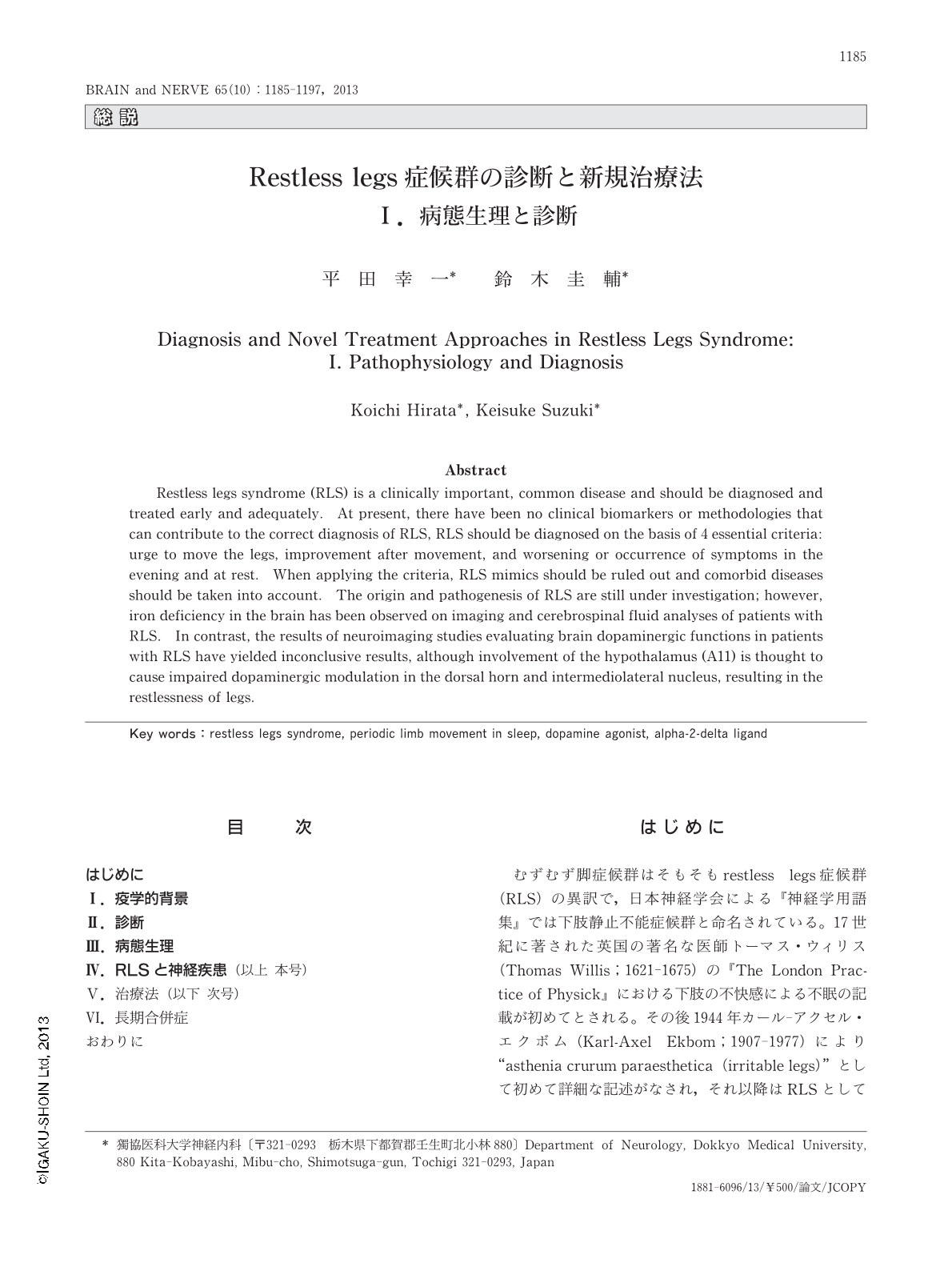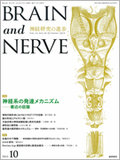Japanese
English
- 有料閲覧
- Abstract 文献概要
- 1ページ目 Look Inside
- 参考文献 Reference
はじめに
むずむず脚症候群はそもそもrestless legs症候群(RLS)の異訳で,日本神経学会による『神経学用語集』では下肢静止不能症候群と命名されている。17世紀に著された英国の著名な医師トーマス・ウィリス(Thomas Willis;1621-1675)の『The London Practice of Physick』における下肢の不快感による不眠の記載が初めてとされる。その後1944年カール-アクセル・エクボム(Karl-Axel Ekbom;1907-1977)により“asthenia crurum paraesthetica(irritable legs)”として初めて詳細な記述がなされ,それ以降はRLSとして報告されている1)。
RLSを正確に診断し,また治療反応性などをみるには睡眠ポリグラフ検査(polysomnography:PSG)が必要である4)。なぜならRLS患者の多くに(睡眠時)周期性四肢運動[periodic limb movement (in sleep):PLM(S)]がみられるからである。PSGは主に睡眠中の前脛骨筋の表面筋電図によりPLMSの有無や程度をみるものである。しかし,RLSは欧米に限らずわが国でも多くの人々にみられ,いわばcommon diseaseであり,外来の第一線臨床で診断が下されなければならない。
以上の点に鑑み,2003年米国NIH(National Institute of Health)の国際RLS研究グループ(International RLS Study Group:IRLSSG)は4項目の診断基準を提唱した(Table1)5)。これはバイオマーカーなどを用いずにRLSの定義に基づき診断するものと解釈できるが,睡眠障害に関する記述は症状が日中より夕方・夜間に増強する,もしくは夕方・夜間のみに起こることの日内変動の記載があるにすぎない。
一方,睡眠障害国際分類第2版(ICSD-2)では,RLSはそもそも睡眠関連運動障害群として分類される(Table2)6)。しかし,RLSでみられる運動は睡眠関連運動障害の定義である単純で常同的なものではないが,症状発現のピークが夕方および夜であるという症状の日内変動の存在のほか,中等症以上のRLSでは睡眠障害が頻発すること,さらには多くの患者にPLMSがみられることによる。
以上より,RLSの定義は,IRLSSG診断基準に準拠するのが現実的である。すなわち,覚醒安静時および入眠時の四肢異常感覚(知覚異常)を特徴とする知覚障害であり,その症状は,発現部位の筋肉を活動させることによって軽減する。またRLSの知覚異常は脚を中心に局所的で原因不明の特発性のものが多く,発現のピークは夕方および夜である。また,多くの患者にPLMSがみられる。そしてさらに,高い確率で遺伝し,また,これらの症状はドパミンアゴニストによって緩和されるとしてよいと考えられる。本稿ではRLSの病態生理および鑑別診断,新規治療薬にも焦点を合わせて解説する。
Abstract
Restless legs syndrome (RLS) is a clinically important, common disease and should be diagnosed and treated early and adequately. At present, there have been no clinical biomarkers or methodologies that can contribute to the correct diagnosis of RLS, RLS should be diagnosed on the basis of 4 essential criteria: urge to move the legs, improvement after movement, and worsening or occurrence of symptoms in the evening and at rest. When applying the criteria, RLS mimics should be ruled out and comorbid diseases should be taken into account. The origin and pathogenesis of RLS are still under investigation; however, iron deficiency in the brain has been observed on imaging and cerebrospinal fluid analyses of patients with RLS. In contrast, the results of neuroimaging studies evaluating brain dopaminergic functions in patients with RLS have yielded inconclusive results, although involvement of the hypothalamus (A11) is thought to cause impaired dopaminergic modulation in the dorsal horn and intermediolateral nucleus, resulting in the restlessness of legs.

Copyright © 2013, Igaku-Shoin Ltd. All rights reserved.


